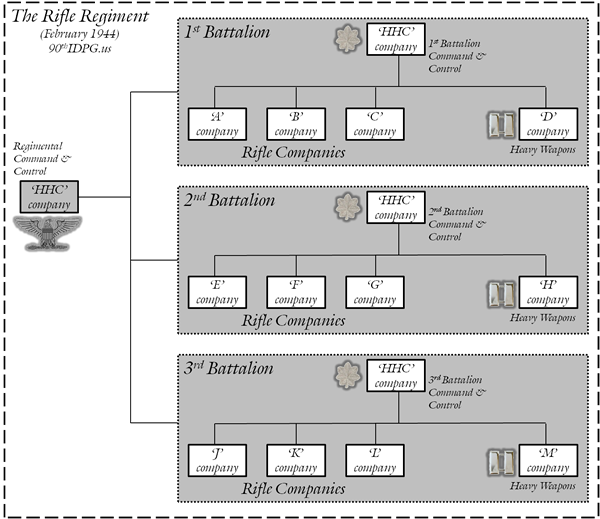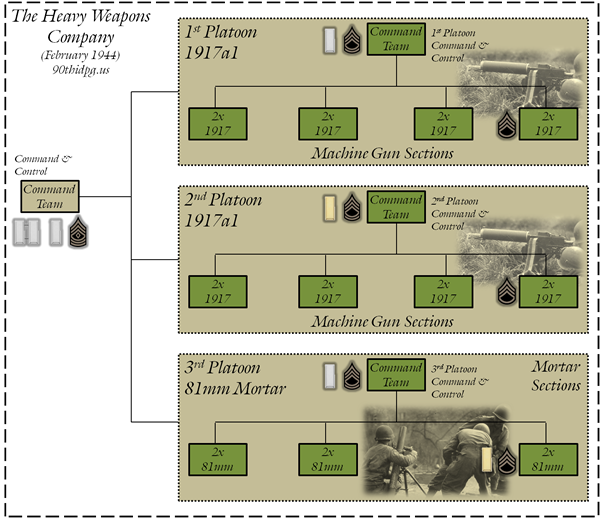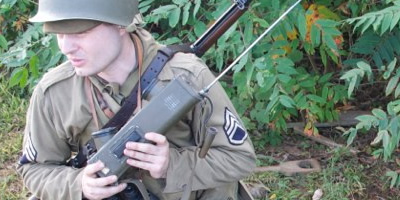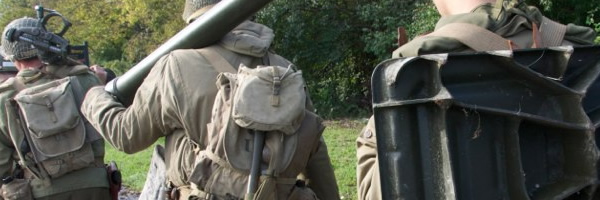Tableau Number 1
The 81mm Mortar Squad
Date: January 2013
Author: Chris Guska - 90th IDPG
Regarding the 81mm
From the 1942 Infantry Journal - 81mm Mortar Handbook
The 81mm mortar combines the mobility and power in greater degree than any other supporting infantry weapon. Its projectiles have an explosive effect comparable to 75mm projectiles. The weapon can be man-handled for considerable distances without causing excessive fatigue to the crew. The useful range of mortar is about 2,000 yards. Range is limited by the requirements of observation rather than the ballistic properties of the piece. At longer ranges, accuracy of fire is greatly decreased. Due to its high-angle trajectory, the mortar is capable of taking advantage of deep defilade and of exercising a wide choice in the selection of positions. It is habitually fired from masked positions. When under battalion control, it normally operates in a zone extending from 300 to 800 yards in the rear of the leading troops.
TO&E
Who used 81mm Mortars and how did they fit into the Infantry Regiment?
81mm Mortars were a part of the Heavy Weapons Company.
I'll spell all this out with diagrams.
The following is based on the Feb. 1944, INFANTRY HEAVY WEAPONS COMPANY, Table of Organization and Equipment No. 7-18.
The Heavy Weapons Company was allotted communications equipment at the Company level.
- 20 sets of field phones and wire
- 6 SCR-536 Radios (BC-611 Handy Talkies)
Each Mortar Squad was allocated 1 Jeep and trailer No handcarts are listed on the TO&E (but they are in the manual and evidenced in photos) With regards to TO&E's, they are the "on paper" authorized strength for a unit - but wartime losses and the replacement process did not always allow for things to be exactly as prescribed.
Additionally, the weapons as prescribed were an "ideal" - rather than an actual. For example, in the Feb. 1944 Infantry TO&E's, across all levels, the M3 Grease Gun, M1919a6 and M9 bazooka were prescribed, but clearly the earlier Thompson SMG, M1919a4 and M1 series bazookas were prevalent through war's end.
Introduction
Section 1: By the book - TO&E (you are here)
Section 2: Notes from the manuals on equipment
Section 3: Original Photographs - Key Observations
Section 4: Preparing for Fire - Operational Concepts
Section 5: Conducting Fire - Modern Interpretation
90th IDPG Original Research








